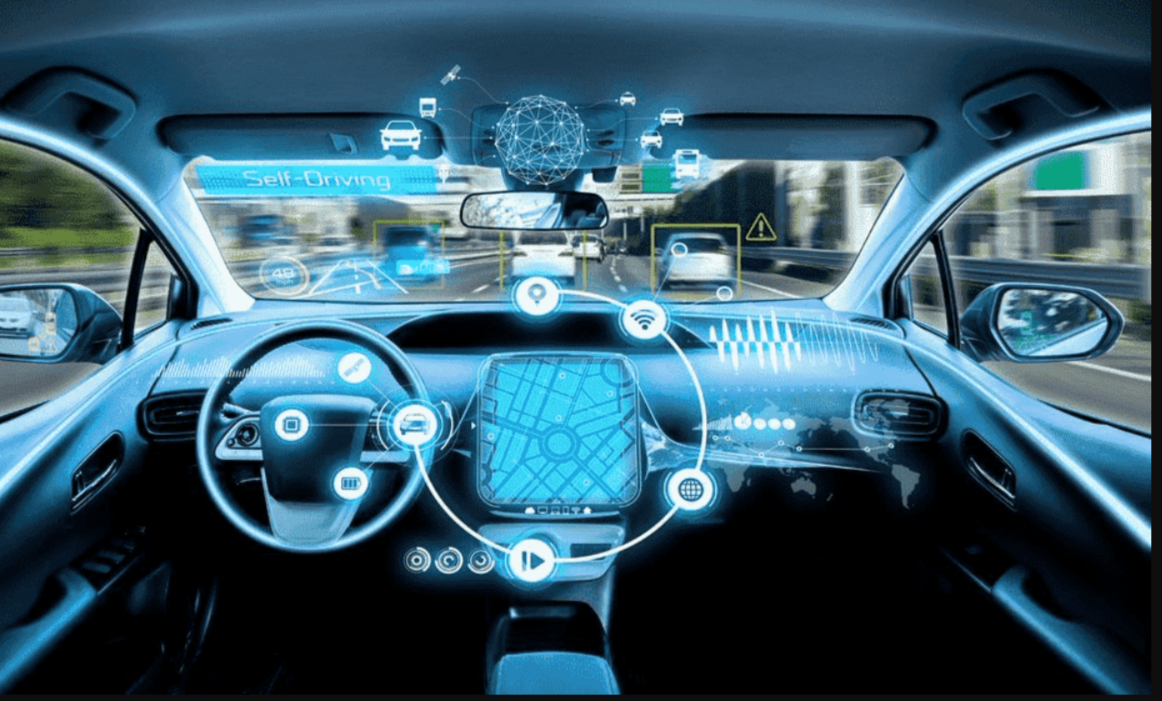.png)
A Look at the Future of AI Electric Cars
Last week I participated in a radio program about the future of artificial intelligence electric vehicles. It's based on an article from BBC TopGear, the show used to be my favorite motoring show but they changed the presenters so I rarely watch it now. It got me thinking about how fast things are moving and how much misinformation there is about how and when autonomous driving will be possible (for now, regardless of what Elon Musk says), the current state of electric vehicles. There is a small chance that artificial intelligence will be introduced into our cars.
Electric Car Status
What is particularly interesting and worrying is how quickly China is advancing these technologies and how capable, faster and cheaper its electric vehicles are, despite the serious quality control issues it currently has. Let's talk about the rapid progress in autonomous driving, the current state of electric cars and the role of AI in the automotive industry. Then we'll finish with my product of the week: a car cheat tool that my wife bought me and I'm amazed. Current status of electric vehicles Pressure on electric vehicle sales has been increasing rapidly of late, largely as demand for these vehicles falls, slowing market growth. This slowdown is due to three things: ongoing quality issues, particularly with Tesla's new Cybertruck, some of Musk's political views, and a lack of marketing execution. As a result, Tesla's sales rate took a heavy hit. Given that it is currently the biggest player in the EV market, its problems have a huge impact on the industry. But Tesla is not alone.
In addition, some car manufacturers think that by 2030 they will review this feature and rotate to add a hybrid electric vehicle (PHEV). Plug-in hybrids come with their own issues, however, as they effectively have two powertrains, which means significantly increased complexity and diverse usage patterns. I mean, most new plug-in hybrids with an electric range of about 40 miles won't use the gas engine much, but the gas engine needs to run, especially if they run on ethanol, which can cause engine failure. If the gas is too old, it can cause engine failure. Here's a tip: If you have a plug-in hybrid, find a gas station that sells ethanol-free gasoline. You won't have much trouble with this gas. The same goes for motorized equipment such as snow blowers that sit idle for most of the year.
The Tesla standard is now called North American charging standards or NAC. By 2026, most electric cars in the US should be converted to this standard. Older electric cars can use an adapter, but don't bother buying one until your car receives a software update that allows it to communicate with Tesla's supercharger. By the way, if you haven't tried either type of charger, the old American standard requires a fee and an ATM-like experience: you have to activate the charger via an app first, and then it will probably allow your car to charge. although the charger often breaks into pieces. Driving a Tesla, on the other hand, requires only joining. However, there are issues with Tesla chargers: gasoline-powered cars parked in charging spots, Tesla drivers leaving the vehicle longer than necessary, people damaging chargers, and theft (this isn't just a problem with Tesla chargers) .
The problem, as I see it, is that we start moving to electric vehicles before we have the technology to do so. After decades of battery technology -progress is battery technology, battery technology, mobile phones, iPods and laptop battery technology slowly arrived and lithium ion batteries have been developed. In addition, you may remember that many batteries are on fire and this problem continues to bother us. Lithium and cobalt, both used in current lithium-ion batteries, are challenging to mine. Lithium burns hot enough to melt aluminum and some types of steel, as I discovered when a battery nearly burned down my house after melting the steel screws on its containment chamber. In addition, lithium batteries are quickly degraded when they overheat, for example, during quick charging.

Big Changes Coming
Over the past 30 years, we have significantly increased the battery development. By 2027, we should have viable alternatives to lithium-ion batteries, including solid-state batteries, sodium-ion batteries, and some new lithium batteries (cobalt mining is also pretty poor).
These upcoming technologies are expected to offer ranges of 750 miles or more, 15-year, 1 million-mile lifetimes, and other benefits that will make the need to charge outside the home less obvious, because how often will you drive more than 750 miles? Combined with a more powerful charger, these new batteries should be charged in less than 10 minutes without the risk of premature battery aging. Chinese company Xpeng Motors has unveiled a car with nearly 500 miles of mileage and an attractive price tag that suggests it poses as much of a threat to established automakers as Japan once did. So far, Tesla has significant range and price advantages in this market.
So electric propulsion becomes more convenient and competitive with gas-powered vehicles, but what about artificial intelligence? Autonomous cars will have five levels. Level 5 means they never need a leader. Currently, most cars hover around level 2+, which almost requires you to be able to avoid things like the car in front of you.

.jpg)





.png)
.png)
.png)
.png)
.png)